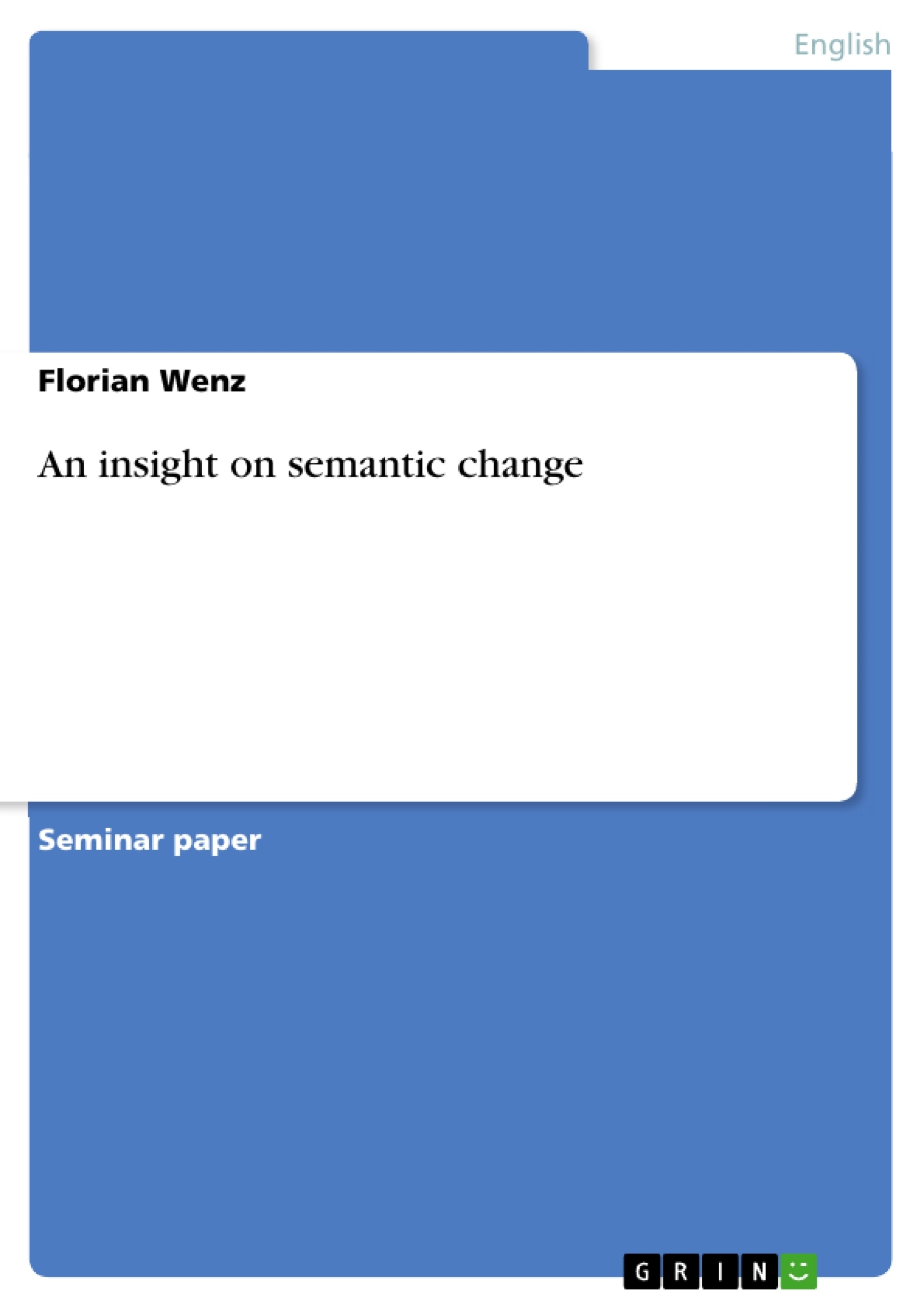“Nothing is perfectly static. Every word, every grammatical element, every locution, every sound and accent is a slowly changing configuration, molded by the invisible and impersonal drift that is the life of language.” (Sapir 1949: 171)
Reading this quote, in which Edward Sapir describes the nature of language, there are two important points, which I would like to use as a starting point for this paper. The first point is that language undergoes a continuous change and is never “perfectly static”. This is especially true for semantics as Ullmann states: “Of all linguistic elements caught up in this drift, meaning is probably the least resistant to change.” (Ullmann 1977: 193) The meaning of words is in a constant process of alteration.
The second point is that the change mentioned above is done by “the invisible and impersonal drift” or to put it in simple words: The change in language in general and in meaning in particular happens unconsciously to the speakers.
This fact poses the following questions: Why do speakers change the meaning of a word if they are not aware of it? What are the forces behind this process, how does this process look like and what are the most relevant types of change? Or in general: What is semantic change?
To give answers to exactly these major questions about semantic change, will be the aim of this paper. The basis for this paper will be the theories of Andreas Blank, who even though being a Romanist, developed a precise, extensive and still very comprehensive theoretical work on semantic change, which is “[...] recommendable for historical semanticists of all languages.” (Grzega 2000: 233)
Table of Contents
- Introduction
- The process of semantic change
- Types of semantic change
- Metaphor
- Definition
- Process of creation
- Conceptual metaphors
- Metonymy
- Ellipsis (lexical absorption)
- Metaphor
- Motivations for semantic change
- New concept (need for an new name)
- Abstract concepts, distant and usually invisible referents
- Sociocultural change
- Close conceptual or factual relation
- Complexity and irregularity in the lexicon
- Emotionally marked concepts
- Is semantic change predictable?
Objectives and Key Themes
This paper aims to explore the concept of semantic change, answering fundamental questions about the process of meaning alteration in language. The paper will utilize the theories of Andreas Blank, a prominent Romanist, to provide a comprehensive framework for understanding semantic change.
- The continuous nature of language change, particularly in semantics.
- The unconscious nature of semantic change and the forces driving it.
- The types of semantic change, focusing on metaphor, metonymy, and ellipsis.
- The role of associative principles in semantic change.
- The process of semantic innovation and lexicalization.
Chapter Summaries
- Introduction: This chapter introduces the concept of semantic change and its importance, highlighting the continuous evolution of language and the unconscious nature of semantic change.
- The process of semantic change: This chapter explores the process of semantic change, distinguishing between “innovative semantic change” and “reductive semantic change.” It emphasizes the gradual and slow nature of semantic change, involving an intermediate stage of polysemy where multiple meanings coexist.
- Types of semantic change: This chapter discusses various types of semantic change, focusing on those considered most prevalent and relevant: metaphor, metonymy, and ellipsis. It outlines the traditional view of metaphor as a rhetorical device and its importance in cognitive linguistics as a reflection of human conceptualization.
Keywords
The main keywords and focus topics of this text are semantic change, language evolution, cognitive linguistics, metaphor, metonymy, ellipsis, lexicalization, polysemy, and associative principles.
- Quote paper
- Dipl. Germ. Florian Wenz (Author), 2011, An insight on semantic change, Munich, GRIN Verlag, https://www.grin.com/document/192733



